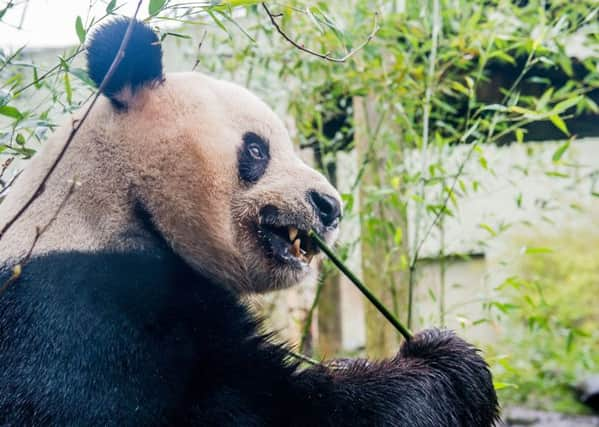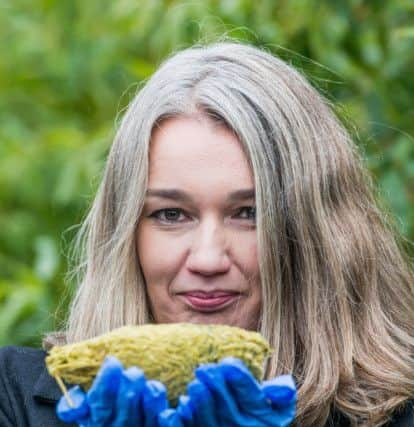Edinburgh Zoo panda poo study to shed light on dietary habits


Samples from Tian Tian and Yang Guang will be investigated to discover what exactly the pandas eat and how it affects their body.
Despite their reputation as picky eaters, previous work has suggested that pandas may eat as many as 60 different species of bamboo and could possibly consume other plants, fungi and animals.
Advertisement
Hide AdAdvertisement
Hide AdThe project run by the Royal Zoological Society of Scotland and the Royal Botanic Garden has been awarded £250,000 by the Leverhulme Trust to look at the complexity of the giant panda diet.


Different species of bamboo shoots are not the same to giant pandas as some have different nutritional values and can be more difficult to digest.
It is hoped the project will give researchers a better understanding of how environmental factors such as sex, season and availability of food impact on a wild panda’s diet.
Dr Linda Neaves, the molecular ecologist heading up the RBGE team, said the research into their diet will help conserve the world population of wild pandas.
Advertisement
Hide AdAdvertisement
Hide AdShe said: “Next generation sequencing technologies will be used to investigate the DNA contained in panda scats to identify exactly what has been eaten and even which panda has eaten it.


“These methods have the potential to overcome many of the problems that have been restricting our understanding and allow us to investigate and quantify the extent of variation in diet and contributing factors such as sex, season and availability.
“We will also be using these methods to help identify different species of bamboo in panda habitat and determine how that relates to diet. This information will help refine understanding of giant panda habitat now and how it might change in the future.
“This, in turn, will provide valuable information for management and conservation of wild panda populations.”
Advertisement
Hide AdAdvertisement
Hide AdIt can be difficult for bamboo species to be analysed once they’ve been digested among wild pandas so the study is looking at examples sent in by zoos.
Samples from zoos will show what exactly has been eaten by the pandas to help develop DNA-based methods for samples in the wild.
Iain Valentine, the director of giant pandas at the RZSS, said it was one of many conservation projects that the zoo is taking on.
He said: “RZSS is currently undertaking or facilitating a huge variety of giant panda conservation projects in Scotland, around the UK and globally.
Advertisement
Hide AdAdvertisement
Hide Ad“These projects will make substantial collective contributions to the future of the giant panda both in captivity and in the wild.”
As part of the ten-year giant panda loan agreement, the Royal Zoological Society Scotland (RZSS) has committed to developing a ‘Joint Laboratory’ with the China Conservation and Research Centre for the Giant Panda (CCRCGP) and the scientific Panda Centre with the Wolong Nature Reserve.